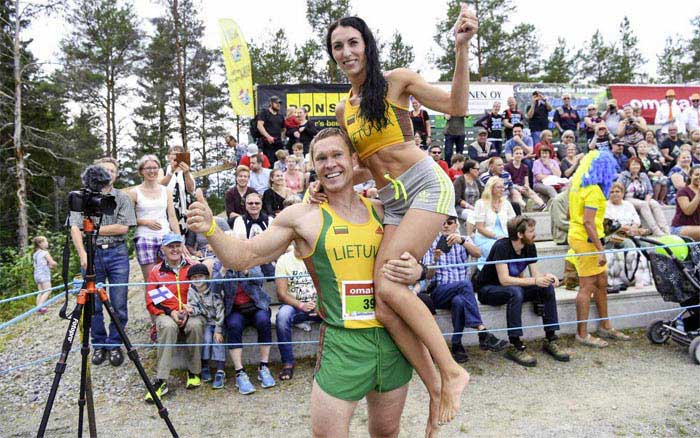Within the many countries of Europe are some cultural events which have grown famous due to their oddity. If you like to seek out novelty while you travel, these festivals are for you - from mass beer drinking in Bavaria to hurling oranges at your loved ones in Spain, you'll be sure to have a once-in-a-lifetime experience that you'll be recalling for years to come.
Cheese Rolling Festival, England
The tiny village of Brockworth, Gloucestershire is where one of the most unusual global festivals takes place. Every Spring bank holiday (normally in early May), a nine-pound wheel of Double Gloucester cheese is let loose at the top of an extremely steep hill, and a group of brave participants race after it. The event is known for causing injury, as amazingly, the cheese can reach speeds of 70 mph. The Cheese Rolling Festival attracts over 4,000 people every year – this continues despite the loss of the festival's management in 2010. This happened due to concerns about the serious injuries caused by the event, but it still continues (unmanaged, however) due to local pride and respect for the tradition.
Wife Carrying Championship, Finland
Rivalling even cheese rolling in its bizarreness, the Finnish sport of wife carrying, or eukonkanto, has slowly spread and become popular all around the world. The basic premise is that each participant must carry their wife, or a female participant, on their back, while navigating an obstacle course. The pinnacle of events for this sport is the annual Wife Carrying Championship held in Sonkajärvi, Finland, where the sport first originated. In 2013, two BBC presenters took part, but reversed their technique. Steph McGovern held her male colleague Mike Bushell as she navigated the course, which according to the championship's presenter, was a world first.
Oktoberfest, Germany
In the beautiful region of Bavaria, Germany, a world-famous festival takes place every late September. At Oktoberfest, you can join in with 18 days of beer drinking, live music, delicious food and general revelry. Held in the city of Munich, it's the world's largest beer festival (and is accompanied by a travelling funfair) which is attended by over six million people from all over the world. This Bavarian festival dates back to 1810, and it's estimated that over 7.7 million litres of beer are served annually. Don't miss the traditional costume parade, one of the largest of its kind in the world, with over 8, 000 people dressed in traditional Bavarian costume.
La Tomatina, Spain
Also known as the world's biggest food fight, La Tomatina is a Spanish tomato festival that takes place in Valencian town of Buñol every August. It began in 1945, after a crowd of rowdy young townspeople stole tomatoes from a vegetable stall and started a food fight. Since then, the tomato fight, which usually lasts two hours, is the pinnacle of a week of celebrations, and uses an estimated 145, 000 kg of tomatoes. Since 2013, La Tomatina has been a ticketed affair, limited to 20, 000 participants, so make sure you enter the ballot with plenty of time.
Running of the Bulls, Spain
The most famous event on this list, the Running of the Bulls is a famously dangerous and controversial event that occurs annually in the town of Pamplona, Spain. Each July, as part of the San Fermin Festival, the town's streets are cordoned off and at 8am every morning, six bulls are released with daring participants running alongside them. The origins of the bull run were the transportation of bulls from the field to the bullring, where they would fight as part of another historic Spanish tradition. When this happened, daring youngsters would jump among them to show off their bravado. Since they started recording it in 1910, 15 people have been killed during this event, so perhaps be an observer rather than a participant of this unusual sport.
Busójárás, Hungary
In the small city of Mohács, Hungary, an unusual celebration takes place annually. Busójárás is a celebration of Šokci tradition (a central European ethnic group) which is named after busós, the traditional wooden masks which are worn during the festival. The festival is also known as the end of winter celebration, and the masks are worn to symbolically scare away winter so that spring can be welcomed in. At this awe-inspiring carnival, you can also witness folk music, parades and dancing, all in the name of warding off the colder months. The carnival lasts six days and takes place every February.

